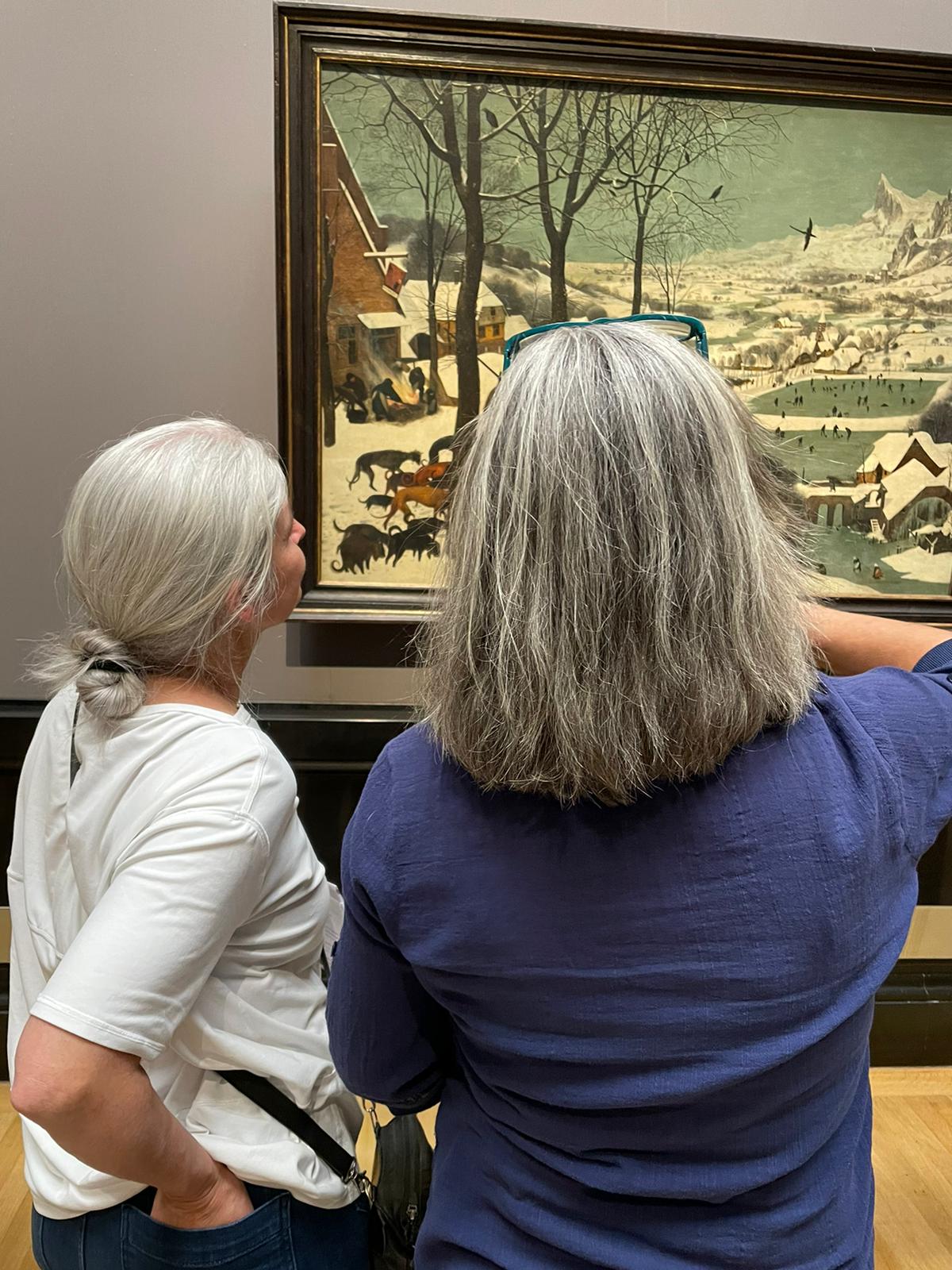Stickiness of memory
Memory is a slippery beast, as we all know, shifting with time, context, mood, and even transfer from internal impression to words on the page. On day two of our Study Tour in European Memory Politics, I experienced in a most delightful way what I might call the faithfulness of memory and also the incredible stickiness of memory when I came face-to-face with Bruegel’s Hunters in the Snow (1565) at this spectacular Wien gallery Kunsthistorisches Museum, situated in one of the former palaces of the Hapsburgs. This was a painting I have known and loved long before I had any idea that Bruegel was such a significant artistic figure, or that it is considered by some, as the museum notes informed me, to be the “first and most prominent winter landscape of European painting.”
For me, this painting’s significance goes back about half a century, to when I was a child and just encountering the pleasures of life as an autonomous little consumer: at a small book and card shop on the main drag of Oakville, Ontario, I was charmed by a set of blank cards, each featuring a different Bruegel painting. These images, but especially Hunters in the Snow, fixed themselves in my memory with a power and persistence that must surely attest to Bruegel’s gift. Seeing the painting in its full immediacy brought me back to my small former self; it was affirming in a way I can’t quite describe, which brought tears to my eyes. But what surprised me—and alerted me to the stickiness of memory—was how much else was evoked by the painting: the lonely violet shade of dusk in Ontario winter; the sharp cleanliness of winter air; the cozy anticipation of shelter as darkness and colder temperatures approach.
Lisa Chalykoff, Professor at the English Department, University of Victoria


